

Reaching a settlement Cape Town, South Africa

Majestic though Cape Town’s setting may be, it’s the townships that will most likely make a first impression on visitors arriving by air. We take a tour of the largest with Juma of Juma Art Tours – a go-getting guide who foresees a time when everyone will want to live there.
I’m waiting in a bustling market square, sweating in the midday heat. Around me, stalls are selling plastic giraffes and T-shirts, and a group of refugees huddles by a church in a ramshackle tent town. They have protest signs referencing grievances I don’t understand. A few days ago, I met a local Cape Town resident for a beer and he immediately apologised for ‘those people’. It was an uncomfortable moment. Not because of the refugees, but because of my beer buddy’s desire to erase them. If he didn’t like them, he’d hate today’s trip around Khayelitsha, South Africa ’s largest and fastest-growing township.
Tour leader Juma Mkwela spots me through the crowd: black T-shirt, sunburnt head (that’s me, not him). We get in his car and begin the drive to the township. It’s a 30-minute journey, just time to find out about his immigrant origin story.
“When I moved here from Zimbabwe, I had a job in construction, working for this man who would swear at me all the time. Then, during the Rugby World Cup, I walked past a friend who was selling rugby T-shirts. He gave me some stock and I made enough for one month’s salary in a day – around 9,000 rand, an amount I’d never had in my life. So, I thought, why am I working for that swearing man?”
Juma sent a polite text message to his impolite boss, saying that he would no longer be working with him, and so began his life as an immigrant entrepreneur in South Africa.
“I always wanted to have my own business. I briefly went back home to start something in Zimbabwe, but the economy wasn’t so good.”
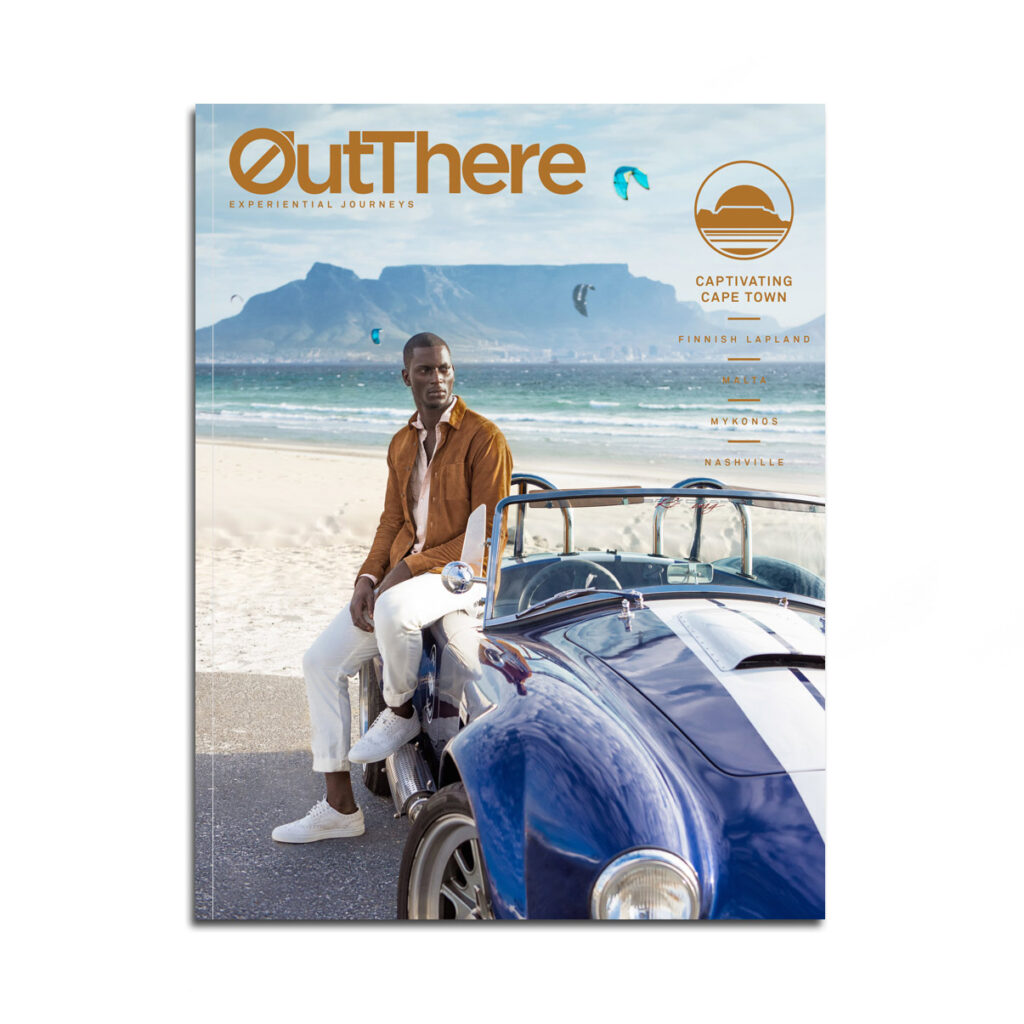
This story first appeared in The Captivating Cape Town Issue , available in print and digital. Subscribe today or purchase a back copy via our online shop .
In fact, Zimbabwean hyperinflation at the time was so wildly out of control that Juma’s $10 bus fare in the morning had gone up by 50 per cent to $15 by the same evening. Long story short, he came back to South Africa.
“There was no money in the banks, so you’d go to a guy in the street. He’d sell you cash for your cheque, but you’d have to give him 50 per cent more. There was no medicine, no electricity, no water. I drank the dirtiest water. It’s lucky that I survived. So I went to Stellenbosch to pick grapes. It was fun. You’re paid by the bucket. So you run, run, run. Some people are relaxed, but I set myself targets. I made about 900 rand a week.”
It seems that T-shirts are the glory days. But South Africa doesn’t host a Rugby World Cup every year, so Juma transitioned to selling his own artwork on the streets, buying the materials on Monday, painting for a couple of days and then selling his work to anyone he could approach: an industrious, one-man factory line. This worked for a while, but then everything suddenly went wrong.
“There were xenophobic attacks and, sadly, I was one of the victims,” he says.
Juma breezes past this detail so quickly, I have to ask him to repeat it. The attacks, aimed at immigrants, happened in 2008 and left 62 people dead.
“I had to go and stay in a refugee camp for five months. While I was there, I tried to find the cause of these attacks. Perhaps it was a lack of education? Then, I moved back into the township community and started a project teaching kids to express themselves in art. I met a local artist, who invited me to work in his studio producing large-scale work. I learnt from all the different artists and started painting big murals.”
Nowadays, Juma runs street-art tours in Cape Town, as well as the township tour I’m experiencing today, and remains heavily involved with helping the township community.
In many ways, his is a typical hard-scrabble immigrant success story, but that belies the sheer difficulty of every step. The calm, matter-of-factness with which Juma recounts it shouldn’t undermine the achievement. I can’t help but think of the struggle in the UK to find Brits to fill fruit-picking jobs, now that immigration has dropped off. You’d trade a hundred of them for one Juma.
Khayelitsha is a township of just under 400,000 people. In Xhosa (pronounced with the distinctive click at the start), it means ‘our new home’. By the time we arrive there, it’s all you can see in any direction – a vast sea of squat shacks and arid terrain.
“Not everyone wants to go on township tours. They think that it’s like a zoo for black people,” says Juma, addressing my white-privilege qualms in a typically blunt fashion. “But I don’t believe in taking advantage of poverty. I go in and become part of the community and contribute. I create art and gardens. People get their houses painted and acquire a source of food. As a tourist, you get to help a family in need. You contribute something lasting. What you mustn’t ever do is just stare.”
The township is both exactly what you expect and something bizarrely different, by turns alien and jarringly familiar. Some distinctions: within Khayelitsha, there is the formal and the informal township. The formal township is built on legally purchased land. The informal is not. These are the tumbledown shacks most people picture (shown memorably in the dystopian sci-fi movie District 9 ). You can be surrounded by corrugated shacks, then walk for five minutes and be in an upwardly mobile area with coffee shops and restaurants.
“It would be tempting to stand outside of a township, picturing only misery inside – and, of course, the social problems are unmissable and serious – but to paint it in only one shade would be reductive and inaccurate”
We begin in the informal section at a small greenhouse, like any other on the street, with the exception of a large vegetable garden. A middle-aged woman in a pink housecoat greets us warmly and waves me into her garden. She speaks no English, so she does a lot of pointing and laughing, while Juma gently chides her for various minor gardening faux pas. But he is genuinely proud and the impact is plain to see.
“You can have a whole meal from here. Or maybe she wants tomatoes and her neighbour wants cabbage, so she goes over there and she trades. And, just like that, everybody is helping everybody.”
A short walk away and the walls become more colourful, with murals by Juma and his artist friends. It’s a collection of abstract coloured pieces, portraits with political statements and messages of inspiration. Zigzagging the narrow passageways between houses, we approach a young woman in a doorway.
“I said I’d help her paint her house,” says Juma, handing me a spray paint can. “We’ll do it like this one.” He points at a nearby house with a multi-coloured, geometric pattern.
We go to work graffitiing the woman’s house as she stands around joking with Juma, dogs wandering between our legs. After a while, we step back and assess our work.
“It’s okay,” he says of my effort, “I can fix it later.”
We break for coffee at a place that could easily have been beamed here from Shoreditch or Melbourne. Young people talk business over Macs and jazz plays on the sound system.
It would be tempting to stand outside of a township, picturing only misery inside – and, of course, the social problems are unmissable and serious – but to paint it in only one shade would be reductive and inaccurate.
We have lunch at 4Roomed ekasi Culture, a restaurant designed to evoke traditional ‘four-roomed homes’ where multiple black families would all share a house on the outskirts of the city. We have a delicious four-course meal of local dishes with a home-cooked feel.
“This is the first restaurant of its kind in Khayelitsha,” says Juma, “but we will see more places like this starting to grow now. There’s the coffee shop, which is bringing coffee culture and a lot of positivity to the area. We’ve got clothes shops opening up.”
Our last stop is a nightclub. It’s early still, but Juma just wants to show me the place – a vast space with an outdoor stage and a built-in kitchen.
“Friday and Saturday nights, this place gets really crazy,” he says.
I can believe it. He buys me a beer, has a quick chat with the bar staff and then it’s back in the car. As Khayelitsha recedes behind us and my cold beer rests between my knees, Juma grows reflective.
“A drunk man once told me that it’s better for us here in the townships. We can do what we want here. We can slaughter a goat in the street and no one can tell us no. He was just a drunk, but maybe he had a point.”
I ask what the future holds. Will there be integration or will there always be this divide between the city and the township?
“The township will become the city. You want fine dining – we can do it here. You want bars – we have them here. You want co-working spaces – we have them. So it’s gonna be a shame for the city when everybody comes to Khayelitsha. There’ll be no one there, just empty offices.”
@jumaarttours
Photography by Martin Perry


CAPE TOWN FOR CAPETONIANS

Juma Art Tours connects locals and visitors through ecotourism
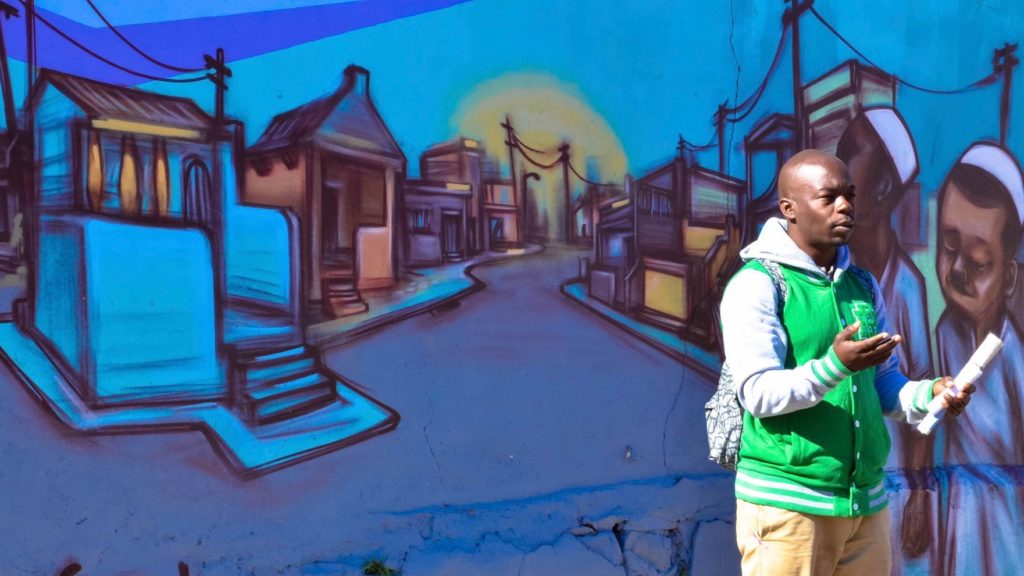
Juma Art Tours believes in connecting visitors and locals through responsible tourism by providing a platform to immerse themselves in different communities and share their ideas about art, sport, history and culture.
Juma Art Tours uses a creative platform to educate the community about creating home gardens or painting murals and helps them find their passions.
Also read: Explore the streets of Cape Town through art this March
While on a Juma Art Tour, you will see and learn about murals that have brought the community together in some way, whether it be the connection created by the art’s meaning or just the simple enjoyment of its beauty.
You will find a piece of home in every person you meet, in every piece of culture and history you experience, and in every work of art you encounter.
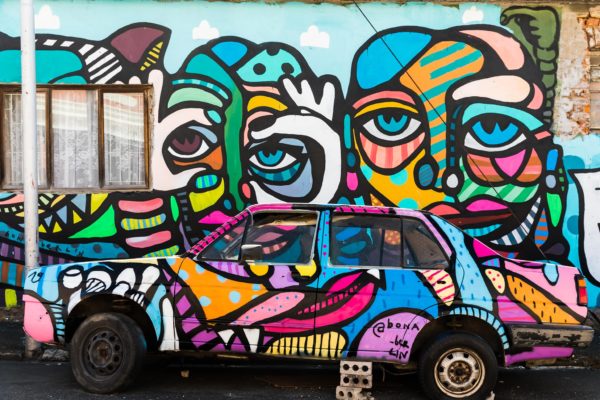
Juma Mkwela, who was born in Malawi and raised in Zimbabwe, is a multi-talented artist with a big heart, a bright smile and a strong commitment to his various communities.
Juma moved to South Africa in search of a better future after fleeing political, social and economic turmoil. While in South Africa, Juma was a victim of xenophobic attacks that swept through the country’s townships.
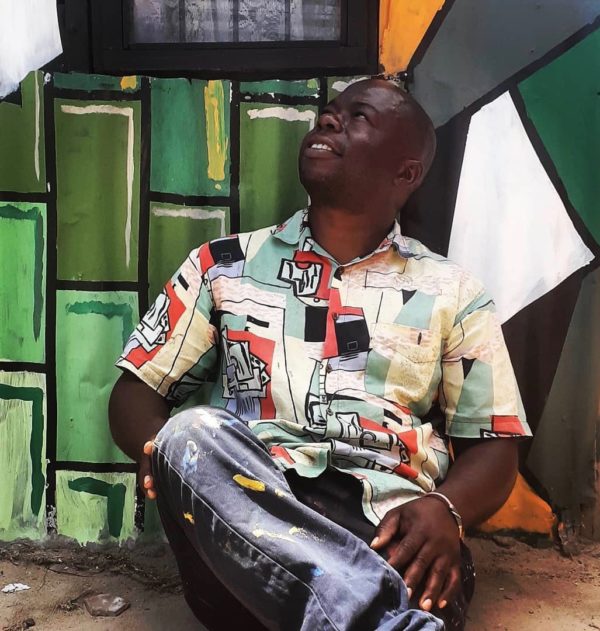
Juma recognises that many xenophobic actions stem from a lack of education and understanding of other cultures. He has set out to share his own interests by teaching the community through art leadership and development programmes, combining his love of art and craft with his newfound desire to educate.
Juma met famous South African street artist Freddy Sam in 2009, who introduced him to the beautiful and powerful impact of murals. Juma Art Tours was founded as a result of the inspiration gained from meeting Freddy and the growing public interest in street art.
Juma believes in the power and impact that street art can have in township communities like his own in Khayelitsha. Artists can tell their stories to a larger audience in a more permanent setting through street art. Furthermore, street art creates a beautiful space within communities, making residents eager to have their own spaces painted.
The main goal of Juma Art Tours is to bring about positive and long-lasting change by promoting responsible tourism. In this type of tourism, guests can make a difference while getting to know the culture they are visiting.
Guests can choose to participate in tours that allow them to get their hands dirty—whether through painting or gardening—and leave feeling accomplished, knowing that they left a permanent mark on the culture in which they participated.
Today, Juma’s work in Khayelitsha has grown into a small team of six people who work to promote the township’s art scene and to create awareness and development opportunities for local artists.
Overall, Juma connects a plethora of local artists eager to have their voices heard by the public and attracts tourists from all over the world to listen to their stories being told.
By going on a Juma Art Tour, you not only learn about the awe-inspiring neighbourhoods you roam, but you are also helping to support and uplift a local community.
Book a Township Experience or Woodstock Art, Culture and History Experience here.
Community projects
Juma’s community projects are created to help the community and its people grow and advance.
Each project is a permanent investment that creates a positive result by uplifting the community.
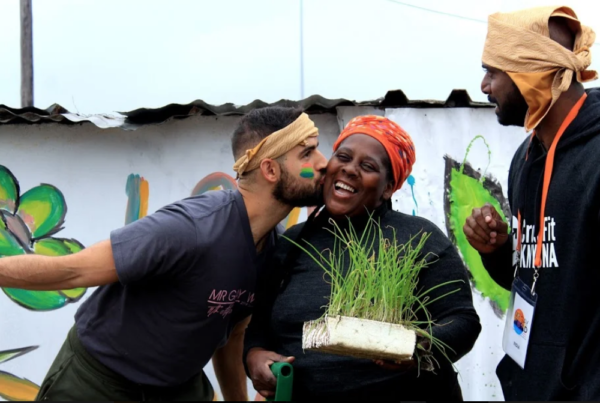
All of its projects rely on volunteers who wish to take part in giving back to the community. Juma Tours offers a variety of different projects, from painting to gardening to working with children.
Explore Juma’s current community projects below:
- Khaltsha Cycles
- The Storyroom Creatives
Each community project relies on donations and volunteers to keep the good work going.
- Location: 66 Albert road, Woodstock, Cape Town
- Contact: 073 400 4064 | 081 511 6639 | [email protected]
- Website: jumaarttours.co.za
Also read:
The Investec Cape Town Art Fair’s 2023 prize winners
Picture: Juma Art Tours / Facebook
Article written by Sarah du Toit

CapeTownETC
Subscribe to our Newsletter cheap cars for sale cheap cars for sale in western cape cheap cars for sale in cape town Joburg news News in Johannesburg Bikes for sale


Juma Art Tours
Event information.
The Juma Art Tours are hosted by artist Juma Mkwela, who became a victim of the South African xenophobic attacks after fleeing his home country due to political and social turmoil. Juma understood such acts of violence stemmed from a lack of education, and saw this as an opportunity for change.
Believing in the transformative power of street art, even in his home Khayelitsha, Juma Art Tours believes in responsible tourism, where guests get involved and impact the communities they are exploring. Whether it be through gardening or painting, guests can know that they are impacting communities rather than merely observing them.
Juma's multicultural team of guides lead a wide variety of art tours, one of which is the Woodstock & Township Art Experience. On this tour, guests can discover the street art, local people, coffee shops, galleries and studios of the two different locations juxtaposed.
Juma Art Tours also offer History and Cultural walking tours of Woodstock, cycle experiences, cooking experiences and an artisanal tour of The Old Biscuit Mill. Township and township nightlife experiences are also available.
Price: R400 - R 1850
Venue address: 66 Albert Rd, Woodstock, Cape Town
Wheelchair accessibility: Unknown
Website: https://www.jumaarttours.co.za/
Tel: 073 400 4064
Email: [email protected]
Instagram: https://www.instagram.com/jumaarttours/
Youtube: https://www.youtube.com/watch?v=JZ57xTEcNeE
- © What's On In Joburg
- All rights reserved
- Built by Yellow Door Collective
- Privacy policy
- Terms of use

Join our exclusive newsletter where we carefully curate the best events, activities and experiences and deliver them right to your inbox!
Juma Art Tours Showcases Cape Town’s Street Art
Last Updated on February 12, 2024 by Travelationship
“What’s the difference between tagging and vandalism,” asked Juma. He let us ponder it for a moment and replied, “Tagging is when you add something without changing the piece, whereas vandalism alters the artwork’s original idea, message, or intent.” That was the moment Juma transformed from being a docent reciting a stale tour to being a guide leading us on an expedition through his community. It was apparent that Juma lived and breathed the street art in front of us; he was as much a part of it as he was of him.
The last time we were in Cape Town was five years ago. The weather was cold, rainy, and windy. Most of our time was spent either indoors or driving the Cape Peninsula. We do remember driving past some murals and noting that we needed to look into the street art scene the next time we were in town. Upon our return to Cape Town, the first adventure we scheduled was a tour with Juma Mkwela of Juma Art Tours to guide us through the sea of art in the Woodstock area.
Juma Art Tours
To understand the importance of art in Woodstock, one needs to know how it came to be. The Woodstock Exchange, once the Woodstock Industrial Center, lies at the center of this story, much like it marks the heart of Woodstock itself. Once home to artists, designers, and small-scale manufacturers, it was sold to developers who came in and turned it into a retail and dining hub, leaving its previous occupants looking for new digs. Many chose to stay in the neighborhood, creating the base for one of the best street art movements we have seen. Approximately 110 pieces throughout the area have an unheard-of shelf life; some are coming into their fifth year. In some cities, artists’ works are vandalized hours or days after they appear, but having a community that respects and promotes each other is inspiring.
Juma has been giving tours of his neighborhood since 2012 and believes colorful streets are like walking in the light. “We paint to inspire ourselves to inspire others,” says Juma about the movement that has put Woodstock on the map. Woodstock used to be known for a very different reason, a place even the police would hesitate to enter. Now you will find a district shaking away its checkered past and rising as an example of what can happen. Walking the art-lined streets with Juma, we felt safe, but it was also apparent that had we been on our own with our cameras hanging out, we would not have regarded ourselves as secure. With that said, yes, we would still visit and walk Woodstock on our own. The area has so much to offer. We wouldn’t take all our gear with us.
Travelasics
How to book with juma.
Website info: Township Art Tours
Cost: R200pp and up, depending on the tour of our choosing
Meeting Place: Front entrance of Woodstock Exchange or designated place agreed upon between you and Juma
Travelationship Rating:
4 out of 5 Travelationship High Fives. We would like to see Juma’s website provide more detailed information about each tour. When we arrived, he explained the art routes are split into two sections. We toured section one, which covered many pieces East of Woodstock Exchange. We would have scheduled differently if we knew there were two parts and a lot more art to see. Type of traveler rating – adventure, historical, bucket lister, street art, local.
See More Photos on Flickr , and Please look for us on Facebook , Twitter , and Instagram !
* Thank you to Juma for the complimentary tour. As always, our opinions are ours – honest, not biased, and as we experienced.
34 thoughts on “Juma Art Tours Showcases Cape Town’s Street Art”
Thank you so much for sharing. This is incredibly creative side of Cap town. I love the way you captured the essence of art in the city. And I would love to take Juma Art Tour whenever I visit South Africa in future.
You are welcome. Glad to hear it.
I have never been on a street art tour but this looks like one I would be interested in. Juma seems to be knowledgable. Awesome murals and street art
Juma knew the history and the area. Plus him knowing almost everyone in the neighborhood helped us feel even more welcome.
I haven’t been on a street art tour yet, but this is something I would definitely love to do. I love celebrating art every chance I get.
Highly recommend this tour, but lots of street art tours around the world. We’ve done a few and this one was one of our favs.
I’m a huge street art fan – I must say, though, that the floral/flowerpot instalments are an incredibly gorgeous (and eco-friendly) way to spruce up an urban jungle!
Juma has taken the urban garden idea into the townships to help beautify the areas in the city and out.
I love street art and it gets even better when you have someone who can explain the history behind the murrials. Would love to do that tour!
Highly recommend it. We really liked it and came away so inspired by the art and the stories.
I love taking such art tours and what better than Cape Town for such activities. Rhino and Elephant ones are my favourite!
Elephants and Rhinos are popular street art subjects all around South Africa.
Love street art! There’s a spot in São Paulo, Brazil which is quite similar. I’ve always wanted to go to Cape Town but I had no idea street art like this existed there. Another excuse to visit 😉
We have heard great things of the street art in Brazil. Hope to see it next year.
The street art in Cape Town looks amazing. I hope to see it in person one day.
We hope you do, too.
I’ve recently started looking into street art (in both Bogota, Colombia & Bristol, England). I’ve never been one for art museums, but I love how accessible the art is when it’s graffiti or street art. Thanks for sharing another great place to check it out.
All great places for Street Art. Learning about the artists or the area makes it more interesting.
Really cool post – love the pics too. I went on a street art tour in London a few months ago and it was such an amazing way to learn about my home city. It’s crazy how much art there is everywhere, and sometimes you don’t end up noticing it at all!
Thank you. Glad you liked it
Awesome – I love street art tours and have heard before that Cape Town is great in terms of that! I’ll pin this to my Africa inspiration board as I hope to take some time off for extensive travel around the continent one day 😀
We consider it a “Must Do” for any street art lover. Enjoy!
This is making me want to visit again!
🙂 Cape Town always deserves another visit. Go for it.
That is some incredible street art guys and to do it with a tour guide, understanding what each murial represents is pretty awesome, especially for such a place like Cape Town. You have inspired me to see if anything like this is available in Rome 🙂 Grazie and safe travels!
Let us know what you find out!!!
Fascinating street art, creativity and ingenuity at its heights.
Yes, really fantastic. And they are adding more weekly.
Responsible artists add a new dimension to their city! Nice!
It really does. The Woodstock area used to be the most dangerous neighborhood and now it’s grown into an artistic hub.
Street Art tours are fantastic, I attended one in London and really enjoyed it. I didn’t know Cape town had them too, would love to attend!
Highly recommend taking the tour. Learning about the artists and history of the area really added a wonderful dimension to the experience.
This is one of the coolest collections and tours I’ve read about. I’ve seen other street art tours that don’t sound as interesting.
We have taken quite a few street art tours and would rate this as either our fav… or at least top 2. Part of what made it so interesting was to learn about how the neighborhood has changed from really dangerous to up and coming artsy. And the residents embrace the art. Lots of houses are painted with full murals. I wouldn’t recommend walking the area alone with all your camera gear, but with Juma we felt very safe.
Leave a Comment Cancel reply
Notify me of new posts by email.
This site uses Akismet to reduce spam. Learn how your comment data is processed .
DESTINATIONS
- North America
- South America
- Our Photo Gear
- Tips and Reviews
- Amazon Storefront
- Etsy - Print Shop
© 2024 Travelationship · All Rights Reserved | Privacy Policy | Disclaimer
As an Amazon Associate, we earn from Qualifying Purchases.
Discover more from Travelationship
Subscribe now to keep reading and get access to the full archive.
Type your email…
Continue reading
- Art, History and Gardens in Japan
- Art in France
- Slide Shows
- Silk Road of China: Art, History & Archaeology
- Art in Paris
- Art in Italy
Moscow and St. Petersburg Art Adventure
- Art in London
- Art in New York
- Boston Art History Architecture
- Private Trips
- Newsletter Sign-up
- Uncategorized
- Comments from Trip Participants
- Winterthur & Brandywine Valley
- Reading Lists
- Travel Tips
- Mountain Hiking Holidays
Recent Posts
- I Keep Bumping into this Guy
- Art of Textiles
- Isamu Noguchi: New York and Japan
- Japan: New Reading for Art Tour to Japan and mountain hiking too
- Camino and the Kumano, Dual Pilgrimages
Recent Comments
- The Silk Road with Art Tours with Amy Osaki | Willamette International Travel on Silk Road of China: Art, History & Archaeology

- Reserve Your Trip
- Trip Application
- Arrival-Departure Form
- Insurance Waiver
- Trip Evaluation
- Passport Information – U.S. State Department
- Willamette International Travel
THIS TRIP IS NOT CURRENTLY SCHEDULED Over the years, Amy has developed and operated trips to a variety of destinations including this one, but not all trips are offered every year. If you are interested in joining a scheduled departure of this trip in the future, please send us an email and let us know. Click to send us an email or use the form at the bottom of this page.
We can organize and operate this trip as a private group departure with a minimum group size of 8 persons. Start organizing your private Russia art adventure here .
Best time to travel: June for the “White Nights” Best gateway city: Moscow and St. Petersburg, Russia Moscow and St. Petersburg Slide Show
Experience the art treasures of Moscow and St. Petersburg with guide, Amy Osaki. Begin in Moscow, continental Europe’s largest city, the seat of the government of Russia, and now home to over twenty billionaires! View iconic sites such as the Kremlin (which began as a fortress in the eleventh century), Red Square, and the sixteenth century St. Basil’s Cathedral. Then explore the art masterpieces at the Tretyakov Gallery, the National Museum of Russian Fine Art encompassing works from the eleventh to the twentieth century. Visit the Armory at the Kremlin filled with Imperial treasures including Faberge eggs once exchanged by the tsar and tsarina at Easter. Conclude your Moscow experience at the quiet seventeenth century Novodevichy Convent, one of many World Heritage sites included in the trip.
After a short flight, continue the trip with five days in St. Petersburg where you’ll be immersed in the opulence of Imperial Russia. Established by Tsar Peter I in 1703, St. Petersburg (known as Petrograd and Leningrad for most of the twentieth century) was the capital of the Russian empire for over two hundred years until the Russian Revolution of 1917. The Hermitage—said to be the largest art museum in the world with a collection of over three million objects housed in four main buildings—rivals the Louvre in Paris for both the quantity and quality of its treasures. Founded in 1764 by Catherine the Great, and open to the pubic for over two hundred years the museum is so vast that we’ll spread our visit out over several days and organize it by different themes. Also on the schedule is a visit to the Peter and Paul Fortress—the original citadel above the river founded in 1703—as well as some of the Imperial palaces in and around St. Petersburg such as Peterhof, a World Heritage Site. Peter I hired French architects to work on his many palaces, including Jean Baptiste Le Blond who worked with Andre Le Notre at Versailles. Consider enhancing your Russian experience by purchasing tickets to a performance—perhaps a ballet at St. Petersburg’s Mariinsky Theatre (also known as the Kirov).
Day 1 Overnight in Moscow Arrive in Moscow and transfer to your centrally-located hotel, your base for the next two nights. Enjoy an afternoon and early evening walk through Red Square (Krasnaya Ploshchad) past St. Basil’s Cathedral, and GUM department store all of which are back-dropped by the walls of the Kremlin fortress. Remember that we are here during the fabled “White Nights” when the summer days linger with light-filled evenings.
Day 2 Overnight in Moscow Within the walls of the Kremlin fortress, visit the Armoury Museum, one of Moscow’s oldest museums established at the start of the nineteenth century. The Kremlin Armoury was the royal arsenal; it produced and stored the weapons, jewelry and other regalia of the tsars. The museum’s collection encompasses four thousand items of applied art from Russia and elsewhere dating from the early fourth century to the twentieth century. Later in the day, visit the collection of masterpieces of the renowned Tretyakov Gallery. The Tretyakov collections were begun by the philanthropist Tretyakov brothers in the early nineteenth century. The gallery is recognized by many as a key repository of Russian art spanning the nation’s artistic tradition from early Orthodox icons to art nouveau, impressionist, and avant-garde works.
Day 3 Overnight in St Petersburg Enjoy a morning visit to the sixteenth century Novodevichy Convent named a World Heritage Site by UNESCO in 2004. The convent’s name is sometimes translated as “New Maidens’ Monastery” to differentiate is from the convent within the walls of the Moscow Kremlin. Surrounded by white crenellated walls, this complex of churches has remained essentially intact since the seventeenth century. Here you’ll find the five-domed Cathedral of Our Lady of Smolensk with its spectacular iconostasis and the tall, red and white Gate Church of the Transfiguration which is often cited as a fine example of “Moscow Baroque” architecture. The neighboring Novodevichy Cemetery is the final resting place of the likes of Anton Chekhov, Sergei Prokofiev, Dmitri Shostakovich, and Boris Yeltsin. This afternoon fly to St. Petersburg, Russia’s second largest city situated on the banks of the Neva River where it empties into the Gulf of Finland.
Day 4 Overnight in St Petersburg Start of your exploration of St. Petersburg with a visit to the Peter and Paul Fortress, the original citadel of St. Petersburg. The fortress was built to the designs of the Swiss Italian architect Domenico Trezzini in the early eighteenth century. Trezzini’s Peter and Paul Cathedral dominates the fortress grounds and its iconic golden spire punctuates into the Baltic sky. Later visit the Yusupov Palace on the Moika, acclaimed as an “encyclopedia of St. Petersburg aristocratic interior design.” The palace was the home of the Yusupov family from 1830 and 1917 and was the place where Grigori Rasputin, a spiritual mentor to Tsar Nicholas II and the Royal Family in the early 20th century, was assassinated. A visit to the Church of the Savior on Spilled Blood built between 1883 and 1907 rounds out the day. The church was built in “Russian Revivalist” architectural style by Tsar Alexander III in commemoration of his father, Alexander II. The church occupies a conspicuous location on St. Petersburg’s Griboedov Canal and contains 7,500 square meters of mosaics; the interior walls and ceilings are completely covered by mosaics.
Day 5 Overnight in St Petersburg Seeing St. Petersburg’s Hermitage Museum in a day would be like trying to see the Smithsonian in a day! Rather than a forced march through the galleries at a rapid pace, we will slow down and savor the masterpieces. Remember, there are nearly seven miles worth of exhibitions! Today we focus on “Imperial Russia,” touring the rooms decorated for members of the Russian Imperial Family and viewing the art they commissioned and collected. This is the art that influenced the style of the grand palaces of the era. View the Grand Suite of rooms, Peter I’s collection of gold, and the jewelers art owned by the Russian Imperial Family (including Fabergé eggs, gold and diamonds). Here, too, are the rooms of Catherine II and her son Paul I with their fifteenth to eighteenth century French paintings and sculpture (Poussin, Watteau, Fragonard, Chardin, and Houdon).
Day 6 Overnight in St Petersburg Return for a second dose of the Hermitage! Today is dedicated to the famous European masterpieces exhibited at the Hermitage. Feast your eyes on memorable works by Leonardo da Vinci, Raphael, Michelangelo, Tintoretto, Tiepolo, Velazquez, and El Greco. At the Hermitage, you can revel in Rembrandt; there are twenty of his works in the museum’s collection. After lunch, enjoy the eighteenth to twentieth century masterpieces of Monet, van Gogh, Gauguin, Rodin, Picasso, Matisse and Kandinsky. Digest the art and reflect on this unique collection of human creations. Consider an evening performance, possibly at the Mariinsky Theatre.
Day 7 Overnight in St Petersburg Journey by hydrofoil across the Gulf of Finland to experience Peter I’s palace at Peterhof, a series of palaces and gardens that evoke comparisons with Versailles which Peter visited in 1715. Begun in 1714 with the construction of the Monplaisir palace and expanded by later Imperial generations who added Rococo and Neo-classical elements, Peterhof is now a World Heritage Site. The creative mastery of architects, engineers, artists and craftsmen from throughout Europe is on display here and all is choreographed to celebrate water in homage to Peter, the maritime emperor.
Day 8 Overnight in St Petersburg Go behind the scenes with an excursion to the Hermitage Museum’s Staraya Derevnya Restoration and Storage Center on the right back of the Neva River north of Kamenny Island. This vast treasure house is only accessible by private tour. Later, travel to Vasilvesky Island across the river from the Hermitage to visit Menishkov Palace completed in 1721 and now the oldest stone building in St. Petersburg. Enjoy a farewell dinner this evening.
About your guide : Amy Osaki holds a master’s degree from the Winterthur Museum. She studied art at the Louvre Museum in Paris and worked as a museum curator for over a decade including six years at the Portland Art Museum. She is an award-winning art educator who has led art trips around the world for the last fifteen years with Walking Softly Adventures. Many of these trips were offered for graduate credit from Portland State University where she is an Adjunct Professor.
Resources for Further Learning
- Preview part of the collection of the State Tretyakov Gallery at its website.
- Learn more about the Moscow Kremlin .
- Prepare yourself to experience the Hermitage . You can even shop on-line at the museum’s on-line museum store!
We're looking forward to hearing from you! You may contact us by telephone at 503-788-9017, by e-mail ([email protected]) or by completing and submitting the form below. Please enter any questions or comments in the "Message" box. PLEASE BE SURE TO MENTION THE TRIP IN WHICH YOU'RE INTERESTED. You must enter a valid email address in order to submit this form successfully. When you're finished entering information, enter the CAPTCHA code where indicated and click the "Submit" button at the bottom of this page. Art Tours by Amy does not release any of the information you provide us to any third party without your express permission.

- Full day Tours
- Half day Tours
- Tour Básico en Moscú
- Tours airport transit
- Winter Tours
- Full day tours
- Half day tours
- Basic Tour Saint Petersburg
- Tours for Cruise Passengers
- Golden Ring Tours
- Tours in Samara (Russia)
- Other Services
- Useful information
- Payment in Guiarus
The Juma-Jami of Eupatoria
What to see in crimea – the juma-jami of eupatoria.
What to see in Crimea during your vacation. One of the places of interest to visit in Crimea is the Juma-Jami of Eupatoria, here we tell you. What to see in the religious center of Crimea and much more.
Places of interest to visit in Crimea
Juma-Jami in Eupatoria (sometimes known as Han-Jami) not only the current religious center; but also one of the most interesting historical and architectural monuments of Muslim architecture in the Crimea. In addition, it is the largest and most beautiful of the peninsula; as well as the only mosque in Europe with so many domes. Many compare it with the consummate ST. Sophia in Istanbul and the Moscow Cathedral Mosque, and the centennial history of this building makes it even more unique.
The construction of the temple dates back to 1552 and is attributed to the authorship of the Ottoman architect, engineer, astronomer and mathematician Sinan. Initially; the mosque served as a place of worship for Allah; and the center of the important events of the Crimean Kanato.

It was here that a rite of passage was carried out in the Crimean Khans. After which the new Khan signed a special law leaving his deposit in the mosque. After that, the governor came out and told the citizens that he was the new Khan, and went to Bakhchisarai, his capital.
For unknown reasons, some design elements declined relatively quickly; in 1666 it was destroyed by the first minaret; and just under 200 years later, it was restored during the second half of the 20th century. On May 16, 1916, the mosque was visited by Emperor Nicholas II; who entered through the east gate, and since then, does not remain open.
During the Soviet period the church was closed and placed in one of the departments of the museum of local history. In the 90s the monastery was returned to the Muslim community. The place narrowly escaped the destruction, but for many decades, it was quite ruinous. After the restoration in 2002, the monument got its original appearance, and opened its doors to tourists.
What to see in the religious center of Crimea – El Juma-Jami de Eupatoria
The main feature of the construction is its skeleton architecture with a rectangular frame on the high and smooth walls. The gallery in the area is divided into two rare stories that highlight two rows of domed windows on both sides. The height of the dome of the main hall is 22 meters with 11 meters crowns; and its 16 m windows are supported with candles over the arches of Podpruzhnymi. They are decorated with stained glass windows of warm tones from the south side and cold from the north. Together they represent eternity.
The minaret with balconies and stairs is located near the central building located 5 vaulted porches, east and west of the 35-meter-high tower. Throughout the main building there are 11 large and small domes. The patio is surrounded by a stone wall, which deserves no less attention. There is a necropolis with marble tombs of Turkish generals who fought in the Crimea.
You can go to the mosque on weekends, in the hotel you can organize excursions, telling everything about the religion, culture, customs and rituals of Muslims. By the way, some researchers believe that here, it was for a long time the Koran was maintained in the 15th century.
World heritage in Yevpatoriya:
architectural features Now the appearance of the mosque is as close as possible to the original. It is a dome structure, with the main dome 11 meters in diameter and raised to a height of 22 meters. In its upper part there are 16 windows arranged with stained glass windows of different colors. The differences between the warm and cold colors are meant to symbolize the seasons, as well as the beginning, the flowering and the fading of life. The restored minarets have a height of 35 m each.
They can be seen from afar, they serve as specific landmarks in this part of the city. The main part is surrounded by two-story galleries, covered by small flattened domes (3 per side). For construction, a local shell rock was used. Although the mosque is operational, common tourists are allowed on weekends. It is better to find out the weather with the help of Yevpatoriya news and information resources or organize group visits in advance. The external examination of Juma-Jami is included in many tours of Yevpatoriya and Little Jerusalem.
It is interesting without visiting from the inside. Truly, this is one of the most famous religious buildings of the complex and the peninsula, along with the dervishes of Tekie and the Orthodox church, sponsored by Nikolai the Wonderworker.
The places of interest to visit in Crimea are fascinating, so you can contact us for more information. What to see in Crimea and more alone in GuiaRus.
Éxito, se ha añadido su servicio al carrito
Se ha añadido a su carrito " " Abonara en su llegada a Rusia
¿Que desea hacer ahora?
RECUERDA QUE PUEDES OBTENER DESCUENTOS!:
Obtén un 5% de descuento al contratar 3 o más productos.
Y por más de tres servicios obtén un 10% de descuento a partir de 5 productos.
* El descuento se aplica automaticamente al finalizar la compra.

Touropia Travel
Discover the World
17 Top Tourist Attractions in Moscow
By Alex Schultz · Last updated on May 4, 2024
The capital of Russia is an incredible place to explore. Visitors to Moscow come away spellbound at all the amazing sights, impressed at the sheer size and grandeur of the city. Lying at the heart of Moscow, the Red Square and the Kremlin are just two of the must-see tourist attractions; they are the historical, political and spiritual heart of the city – and indeed Russia itself.
A fascinating city to wander around, stunning cathedrals, churches, and palaces lie side-by-side with bleak grey monuments and remains from the Soviet state. In addition to its plethora of historical and cultural tourist attractions, Moscow is home to world-class museums, theaters and art galleries.
Renowned for its performing arts, fantastic ballets and amazing circus acts, catching a show while in Moscow is a must. The wealth of brilliant restaurants, trendy bars, and lively nightlife means there is something for everyone to enjoy.
See also: Where to Stay in Moscow
17. Tsaritsyno Palace
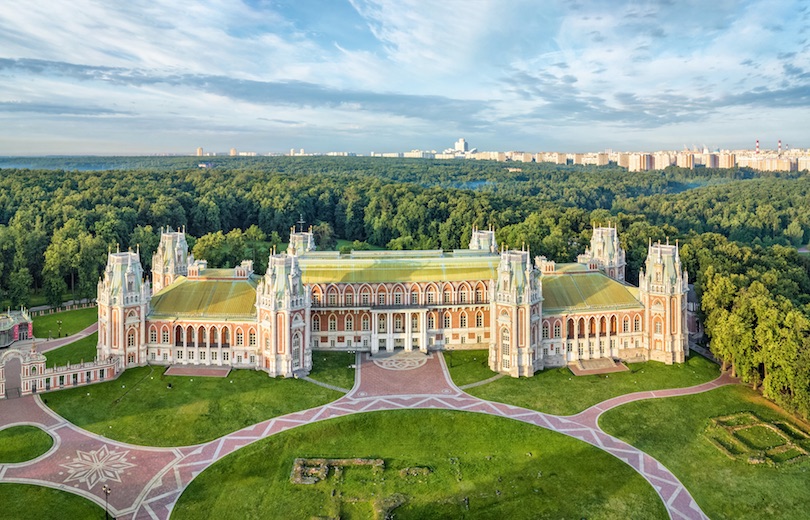
Once the summer residence of Catherine the Great, the stunning Tsaritsyno Palace is now a museum-reserve. The architecture is magnificent and there is a lovely park surrounding it for visitors to explore.
Located in the south of Moscow, the palace was commissioned in 1775 and recent renovations mean its lavish interior looks better than ever before with its elegant halls and beautiful staircases.
The exhibits on display look at the life of the empress as well as the history of Tsaritsyno itself. The huge palace grounds are also home to some other delightful buildings with the elegant opera house and wonderful brickwork of the Small Palace being particularly impressive to gaze upon.
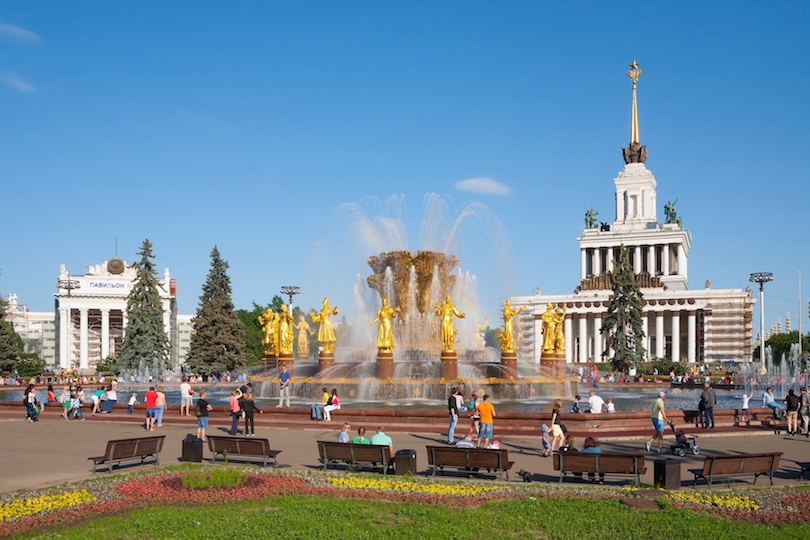
Starting out in 1935 as the ‘All-Union Agricultural Exhibition’, VDNKh has slowly morphed over the years into the fascinating open-air museum of today. Remarkably, over 400 buildings can now be found within its confines.
The huge park complex has numerous pavilions representing former Soviet republics on show, such as those of Armenia and Turkmenistan and the distinctive architecture of each of the buildings is always interesting to gaze upon. In addition to this there is the fascinating Memorial Museum of Cosmonautics which is dedicated to space exploration and the fun Moskvarium aquarium even offers you the chance to swim with dolphins.
With lots of eateries scattered about and numerous entertainment options such as horse-riding and zip-lining, there is something for everyone to enjoy; the Friendship of Nations fountain truly is wonderful.
15. Kremlin Armoury
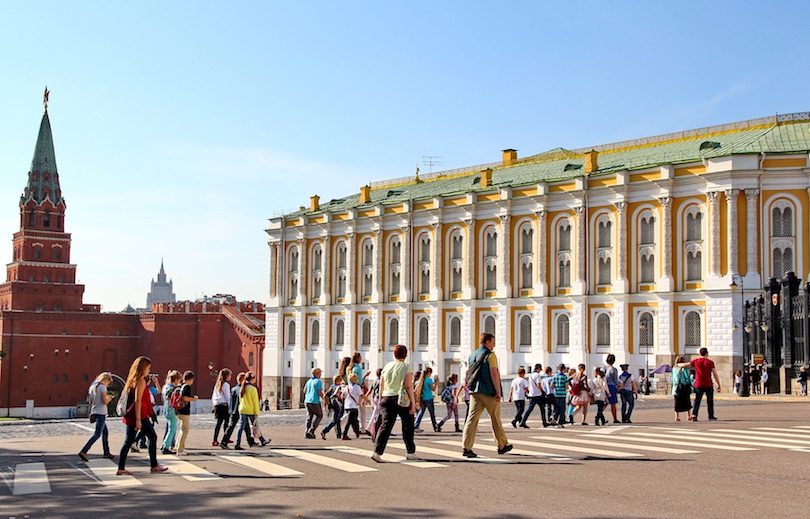
One of the oldest museums in the city, the Kremlin Armoury has a wealth of treasures; highlights include the ornate Grand Siberian Railway egg, the historic Cap of Monomakh and the stunning Imperial Crown of Russia which often has a crowd of tourists around it, jostling to take a photo.
Once the royal armory, there are loads of fascinating objects on display. Perusing the many sabers, jewelry, armor and more is as interesting as it is educational and entertaining and the swords are so finely crafted that you’ll almost wish you could pick up one and wield if yourself.
Established in 1851, the museum is situated in the Moscow Kremlin.
14. GUM Department Store

Standing for ‘Main Universal Store’ in Russian, GUM is stunning. Its wonderful skylights and beautiful facades mean it doesn’t look out of place alongside its illustrious neighbors on Red Square.
With over 200 shops, boutiques and upmarket eateries inside, it is a shopaholic’s heaven and concerned partners will be glad to find more affordable options alongside luxury brands such as Dior and Prada.
The main department store in the city, GUM was opened in 1893. The stunning architecture makes it well worth a visit even if shopping isn’t your thing.

13. Moscow Metro
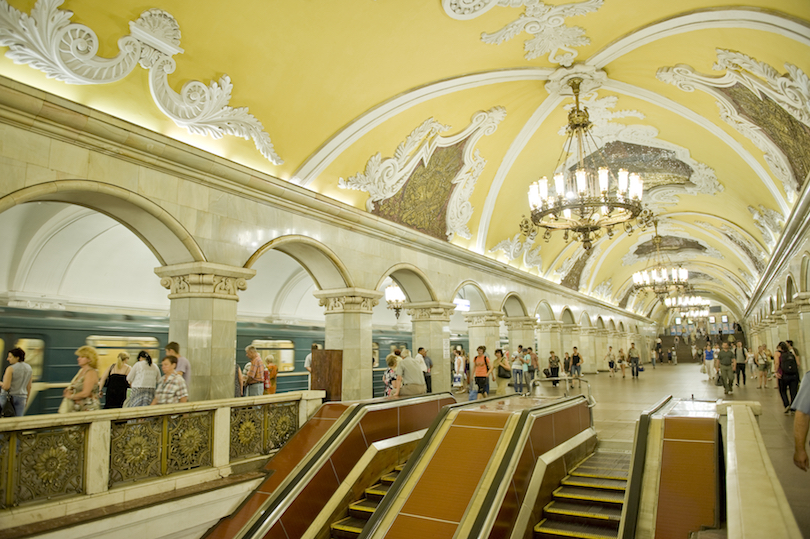
It’s not often that public transport looks like a work of art. So many stops on the Moscow Metro will astound visitors with their beauty and elegance.
Decked in marble and with frescoes covering the walls, the stations are amazing to gaze upon and are part of one of the longest metro systems in the world, with the first stations opened in 1935.
Using the metro is the quickest and easiest way to get around Moscow and braving the crowds of commuters is well worth it for the beauty all around you.
12. Arbat Street
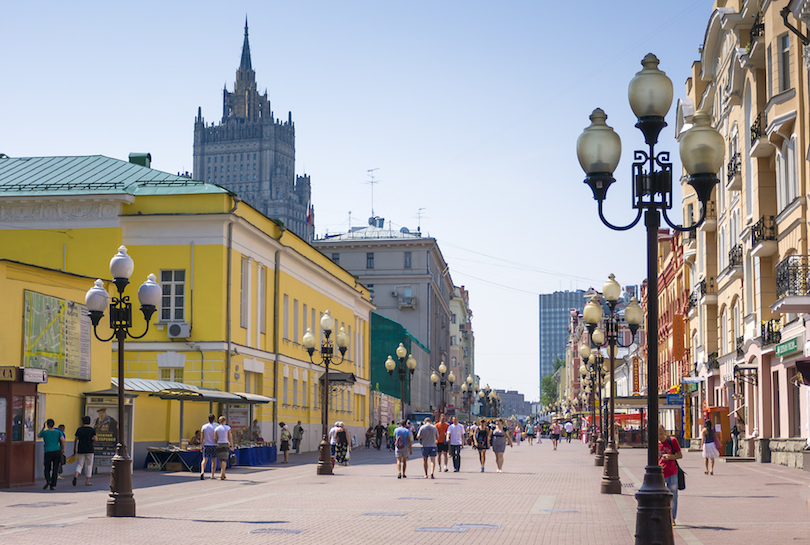
An elegant yet lively street, Arbat is full of impressive architecture and was once a popular place to live for aristocrats, artists, and academics.
A historic place, it is down Arbat Street that Napoleon’s troops are said to have headed on their way to capture the Kremlin.
Nowadays, there are many cafes, restaurants, and shops, as well as various monuments and statues to former residents such as Alexander Pushkin who was reputed to be a lover of the Russian Empress due to his massive influence in court.
11. Novodevichy Convent
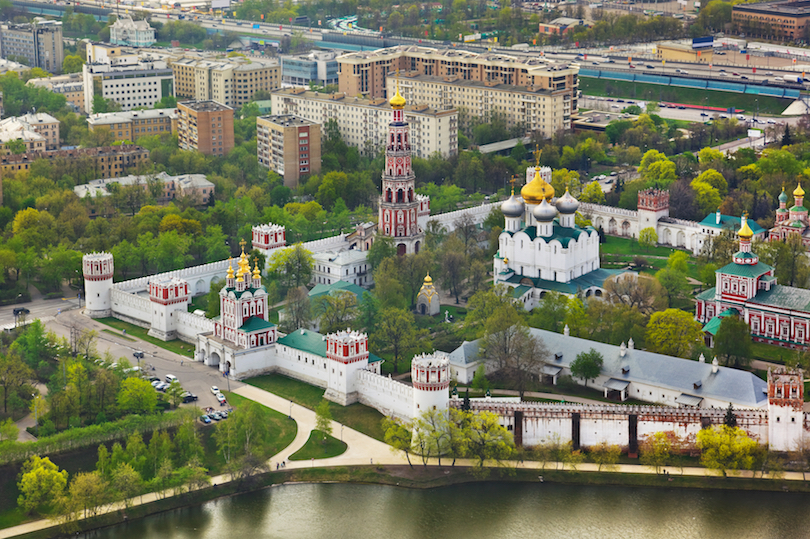
Drenched in history, the Novodevichy Convent is located in a striking building that was once a fortress. This captivating place is well worth visiting when in Moscow.
Founded in 1524, the convent houses four cathedrals; Smolensk Cathedral is the undoubted highlight due to its delightful 16th-century frescoes.
Wandering around the grounds is like stepping back in time. The Novodevichy Cemetery is where many famous leaders of the Soviet Union are buried, such as Yeltsin and Khrushchev.
10. Pushkin Museum
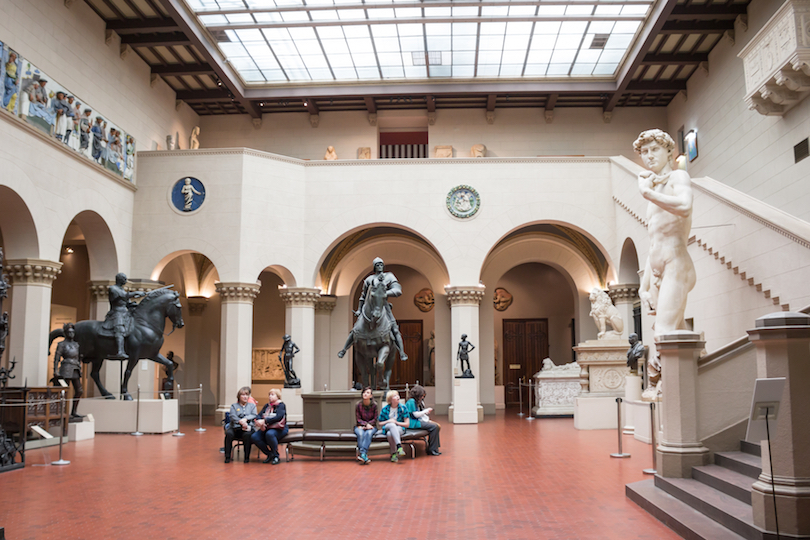
Despite its name, the Pushkin Museum of Fine Arts actually has no connection at all to the famous poet other than that it was named in his honor after his death. A delight to visit, its extensive collection focuses on European art with masterpieces by Botticelli, Rembrandt, and van Gogh all featuring.
Sculptures, graphic art, paintings and more can be found in its beautiful galleries; various sections look at themes and epochs such as the Renaissance, the Dutch Golden Age, and Byzantine art.
Among the many highlights are the clownish characters which can be found in Cezanne’s Fastnacht (Mardi Gras) and the twirling ballerinas who look so elegant in Degas’ Blue Dancers. Picasso’s Young acrobat on a Ball is also well worth checking out for its interesting use of shapes and colors.
9. Christ The Savior Cathedral
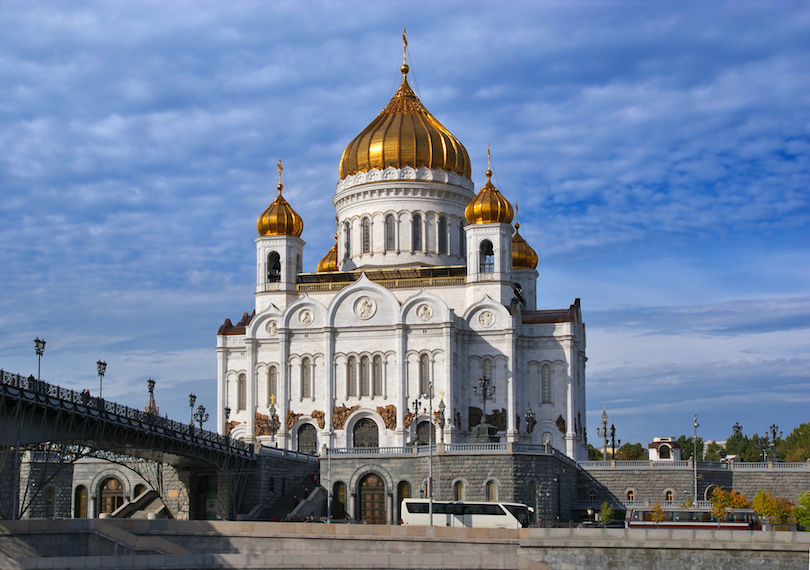
This gorgeous Russian Orthodox cathedral is located on the banks of the Moskva River, just a stone’s throw away from the Kremlin.
The church as it stands today was consecrated in 2000, as the original church that stood here was destroyed on the command of Josef Stalin in 1931 due to the anti-religious campaign.
With its delightful golden dome, spires and dazzling white facades, the Christ the Savior Cathedral is stunning. The interior is just as captivating to wander around, with its beautifully tiled floors and impressive altar.
8. Lenin Mausoleum
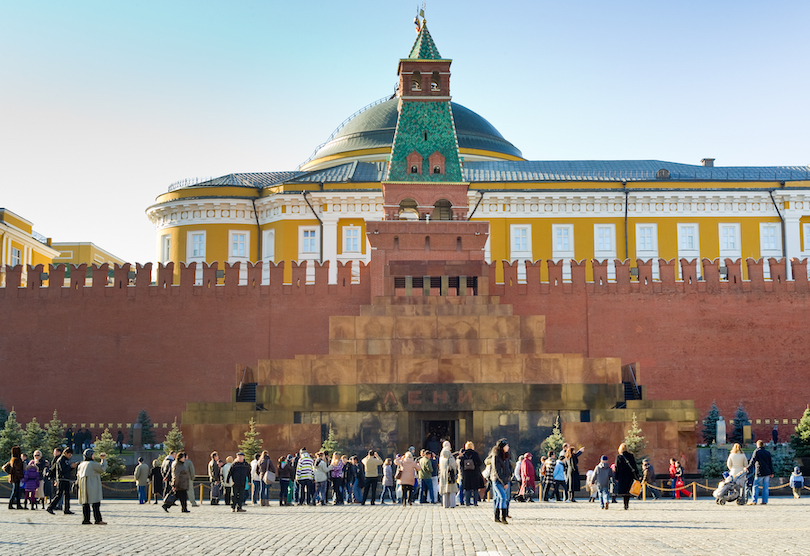
Opened to the public in 1924, Lenin’s Mausoleum is one of the most popular tourist attractions in Moscow. The red granite structure is located at the heart of the city in Red Square.
Lenin’s embalmed body lies in a glass sarcophagus; it is a somewhat eerie experience walking past the former leader of the Soviet Union but is well worth doing as you understandably can’t do it anywhere else in the world.
After visiting the mausoleum, head to the Kremlin wall right next to it for more graves of important communist figures such as Stalin and Brezhnev.
7. Tretyakov Gallery
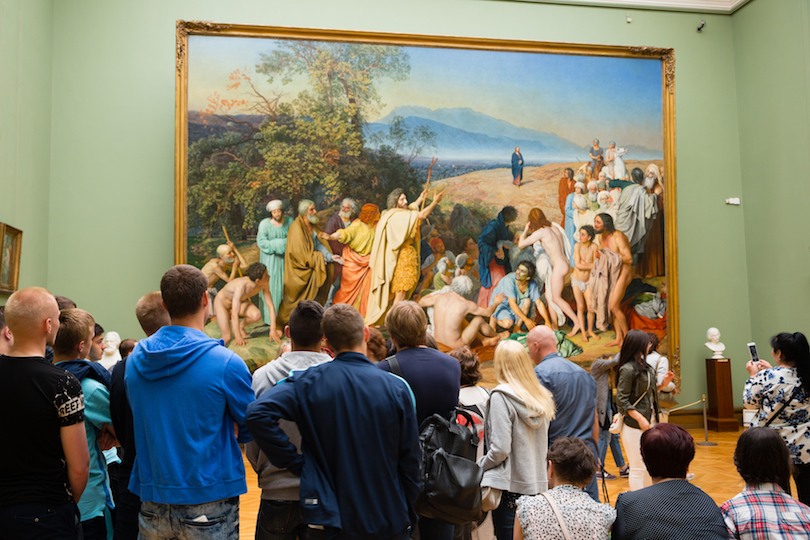
Home to the most extensive and impressive collection of Russian fine art in the world, the State Tretyakov Gallery is definitely worth visiting when in Moscow for the wealth of amazing art pieces that it has on display.
Having started out as the private art collection of the Tretyakov brothers, there are now over 130,000 exhibits. Highlights include the iconic Theotokos of Vladimir which you will almost certainly recognise despite probably not knowing the name and Rublev’s Trinity which is considered to be one of highest achievements in Russian art.
An absolute must for art lovers, the State Tretyakov Gallery will delight visitors with all that is has to offer.
6. Kolomenskoye
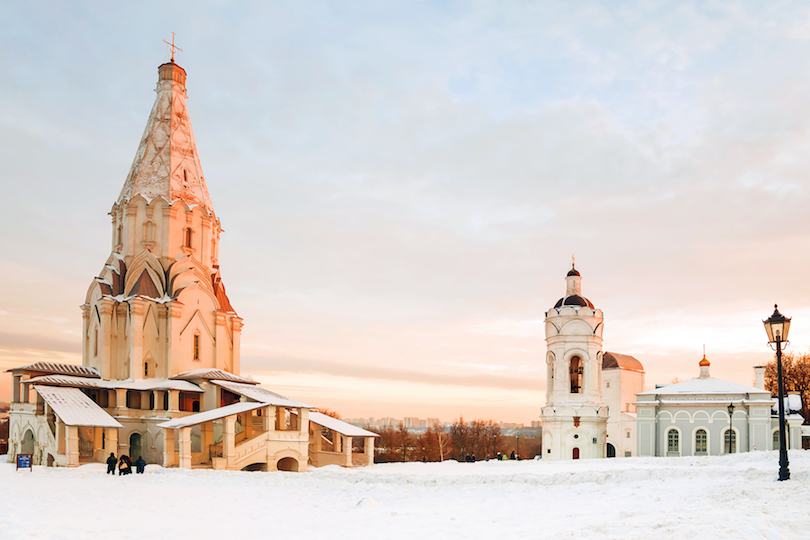
Once a royal estate, Kolomenskoye is now a museum-reserve and lies a few kilometers outside of the city center. A captivating place to visit, there is a plethora of history on show and the site overlooks the Moskva River.
Consisting of four historical sites, there are extensive gardens for visitors to explore, as well as loads of interesting old buildings, the former village of Kolomenskoye itself and the impressive Palace of the Tsar Alexey Mikhailovich – once considered the Eighth Wonder of the World by contemporaries.
Among the many stunning sights, it is the brilliantly white Ascension Church that is the undoubted highlight – dating back to 1532.
5. Gorky Park
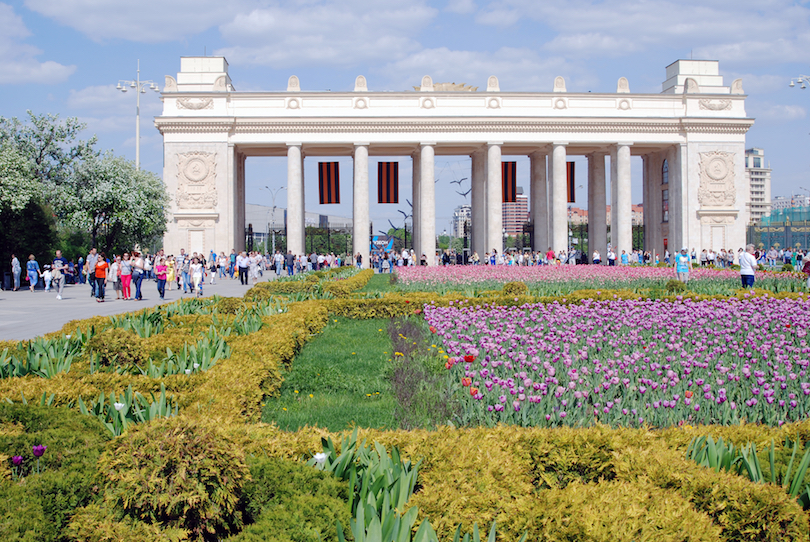
Lying alongside the Moskva River, the huge Gorky Park is a lovely place to visit. Its extensive gardens are home to numerous cultural institutions and visitors should definitely check out the Garage Museum of Contemporary Art and while the eclectic exhibits may not always feature such incredible sights as a balloon-covered rider on a zebra; they certainly always succeed in pushing back the boundaries of art.
Pop-up exhibitions and festivals can be found from time to time in the park itself and there is an open-air theatre and numerous eateries alongside a plethora of leisure activities.
Whether it’s cycling, table tennis or yoga that you are after or beach volleyball and rowing, Gorky Park certainly has it. In winter, there is a huge ice rink for visitors to enjoy.
4. Bolshoi Theatre
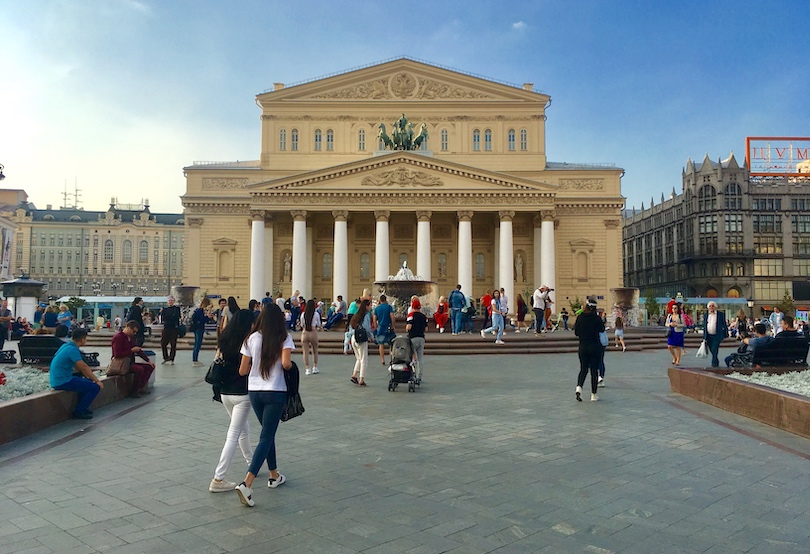
The Bolshoi Theatre is the main theater in the country. The amazing opera and ballet performances it has put on over the centuries go a long way in explaining Russia’s rich history of performing arts.
While the Bolshoi Ballet Company was established in 1776, the theater itself was opened in 1825. The glittering, six-tier auditorium is lavishly and decadently decorated; it is a fitting setting for the world-class performances that take place on its stage.
Spending a night watching a performance of such classics as The Nutcracker or Swan Lake at the Bolshoi Theatre is sure to be a memorable experience and the beauty all around you only adds to the sense of occasion.
3. Moscow Kremlin
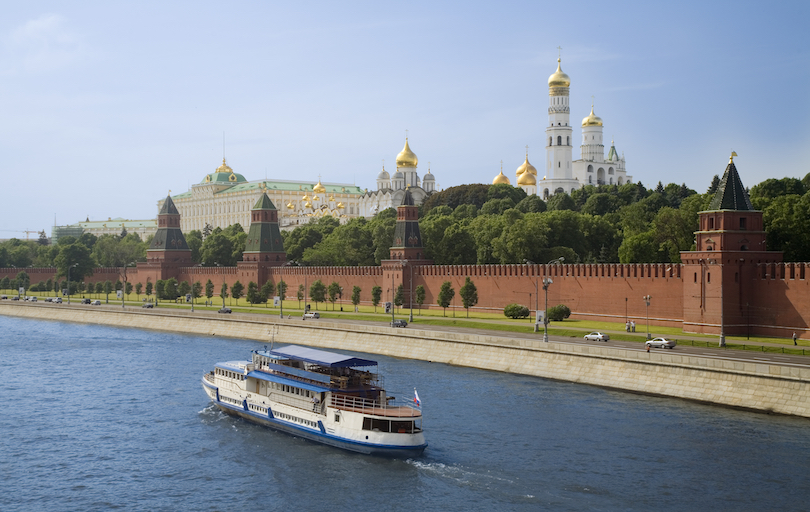
This famously fortified complex is remarkably home to five palaces and four cathedrals and is the historic, political and spiritual center of the city. The Kremlin serves as the residence for the country’s president. It has been used as a fort, and this fact is made clear by its sheer size. The Kremlin’s outer walls were built in the late 1400s.
Under Ivan III, better known as Ivan the Great, the Kremlin became the center of a unified Russian state, and was extensively remodeled. Three of the Kremlin’s cathedrals date to his reign that lasted from 1462-1505. The Deposition Church and the Palace of Facets were also constructed during this time. The Ivan the Great Bell Tower was built in 1508. It is the tallest tower at the Kremlin with a height of 266 feet (81 meters).
Joseph Stalin removed many of the relics from the tsarist regimes. However, the Tsar Bell, the world’s largest bell, and the Tsar Cannon, the largest bombard by caliber in the world, are among the remaining items from that era. The Kremlin Armory is one of Moscow’s oldest museums as it was established more than 200 years ago. Its diamond collection is impressive.
The Kremlin’s gardens – Taynitsky, Grand Kremlin Public and Alexander – are beautiful. The Kremlin has also served as the religious center of the country, and there is a tremendous number of preserved churches and cathedrals here. The collections contained within the museums include more than 60,000 historical, cultural and artistic monuments. Those who enjoy the performing arts will want to consider attending a ballet or concert at the State Kremlin Palace. Completed in 1961, it is the only modern building in the Kremlin.
2. Red Square
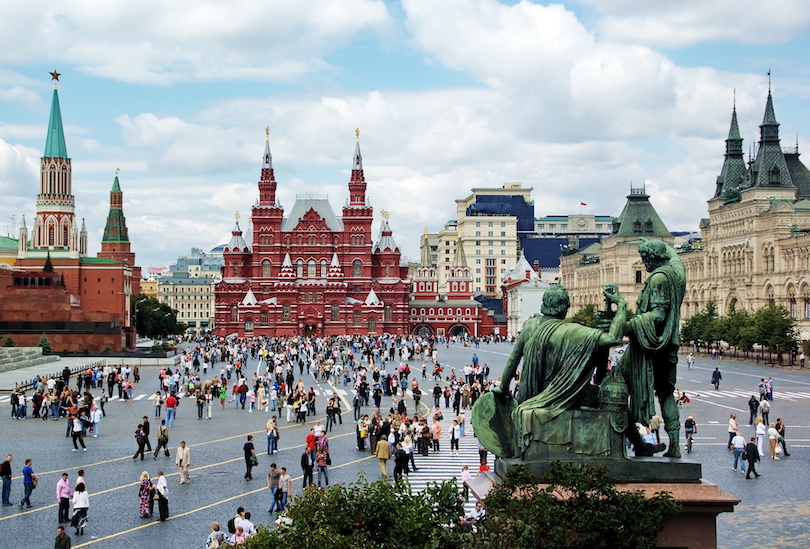
Lying at the heart of Moscow, Red Square is the most important and impressive square in the city. It is one of the most popular tourist attractions due to its wealth of historical sights and cultural landmarks.
Drenched in history, the huge square is home to incredible sights such as the Kremlin, St. Basil’s Cathedral and Lenin’s Mausoleum, among others. Consequently, it is not to be missed when in Moscow as it really is home to the city’s most stunning monuments.
It is here that many important moments in Russian history took place; the former marketplace has hosted everything from Tsar’s coronations and public ceremonies to rock concerts and Soviet military parades. Wandering around the massive square is a humbling experience and undoubtedly one of the highlights the city has to offer.
1. Saint Basil’s Cathedral
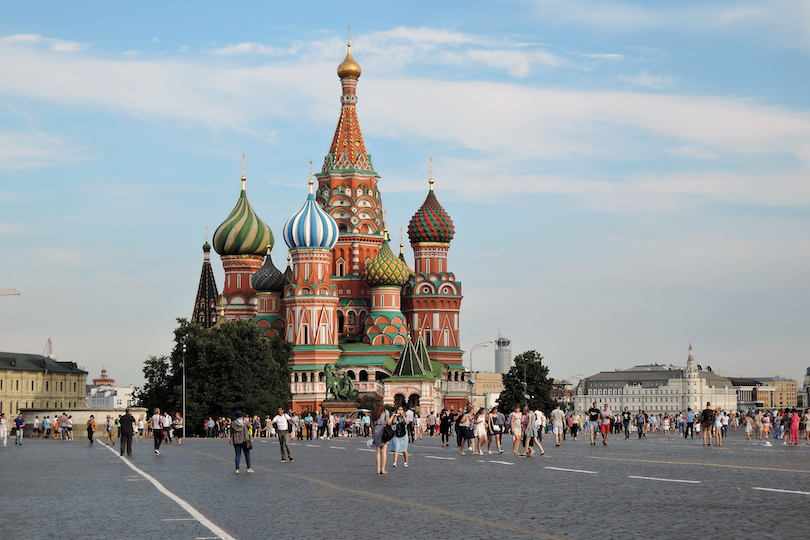
Located in the impressive Red Square, St. Basil’s Cathedral is gorgeous; its delightful spires appear as if out of a fairytale. The most recognizable building in the country, the cathedral is very much a symbol of Russia. No visit to Moscow is complete without having taken in its unique and distinctive features.
Ivan the Terrible ordered the cathedral’s construction in the mid-16th century, and legend holds that Ivan put out the architect’s eyes so that he would be unable to build another cathedral more glorious than St. Basil’s. Designed to resemble the shape of a bonfire in full flame, the architecture is not only unique to the period in which it was built but to any subsequent period. For various reasons, both Napoleon and Stalin wanted to destroy the cathedral but fortunately did not succeed.
Known for its various colors, shapes and geometric patterns, St. Basil’s Cathedral houses nine different chapels that are all connected by a winding labyrinth of corridors and stairways. On the lower floor, St. Basil’s Chapel contains a silver casket bearing the body of St. Basil the Blessed.
Throughout the cathedral are many beautiful murals, frescoes, wooden icons and other art works and artifacts. Outside the cathedral is a lovely garden with the bronze Monument to Minin and Pozharsky, who rallied an all-volunteer Russian army against Polish invaders during a period of the late 16th century known as the Times of Troubles.
Share this post:

10 Most Amazing Destinations in Eastern Russia
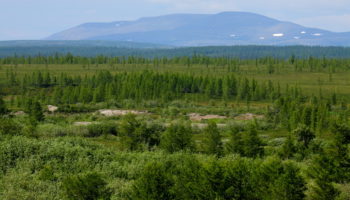
9 Most Beautiful Regions in Russia
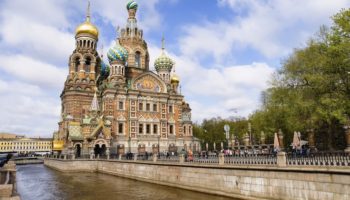
15 Top Tourist Attractions in Saint Petersburg, Russia
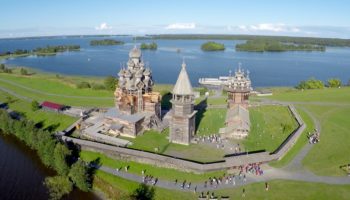
10 Top Tourist Attractions in Russia
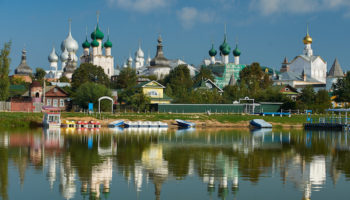
10 Best Places to Visit in Russia
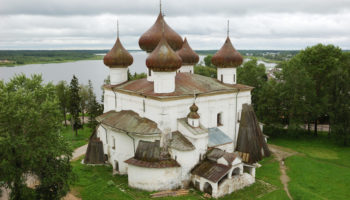
14 Most Scenic Small Towns In Russia
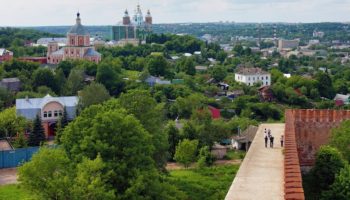
15 Best Cities to Visit in Russia
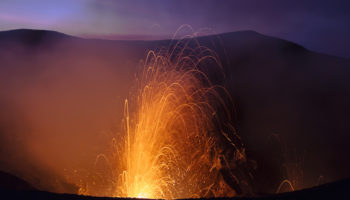
9 Facts about Mount Yasur

Visit Meroë: The Mysterious Pyramids of Sudan
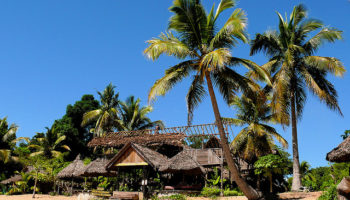
10 Most Beautiful Islands in Africa

Creating a positive and sustainable change in Cape Town through tours and community projects.

Come Explore Cape Town
Our Mission
At Juma Art Tours, we believe in connecting visitors and locals through responsible tourism, We understand the importance of giving people a platform to share their ideas through our community projects, we immerse various communities into our love for art, food ,sport, history and culture. We use a creative platform to educate the community creating home gardens or painting murals and help them find their passions. By going on a Juma Art Tour, you not only learn about the awe-inspiring neighbourhoods you roam, but you are helping support and uplift a local community. Each mural you see has brought the community together in some aspect. Whether it be the connection created from the art’s meaning or just the simple enjoyment of its beauty, Juma Art Tours is unlike any other tour company. You will find a piece of home in every person you meet, every piece of culture and history you experience and every piece of art you encounter , those are the moments you will always remember.

Meet Our Guides

Membership and Associations


IMAGES
VIDEO
COMMENTS
At Juma Art Tours, we believe in connecting visitors and locals through responsible tourism, We understand the importance of giving people a platform to share their ideas through our community projects, we immerse various communities into our love for art, food ,sport, history and culture. We use a creative platform to educate the community ...
The inspiration that stemmed from meeting Freddy, as. well as the growth in public interest for street art, prompted the birth of Juma Art Tours. Juma believes in the potential and the positive impact that street art can have in the township communities, such as his own home in Khayelitsha. Street art allows artists to tell their story to a ...
Juma Art Tours, Cape Town, Western Cape. 1,485 likes · 27 were here. Eco tourism agency offering responsible street art , food , cycling community...
Street Art Tour. 2-3 hours. This is the only township tour that will make you connect with locals through, arts, music, food and storytelling and unforgettable…. Free cancellation. Recommended by 100% of travelers. from. $49. per adult. Reserve.
Click the drop down menu to learn more about all of our tours and experiences! ©2019 Juma Art Tours. Proudly created with Wix.com. Cape town tours.
At Juma Art Tours, we believe in connecting visitors and locals through responsible tourism, We understand the importance of giving people a platform to share their ideas through our community projects, we immerse various communities into our love for art, food ,sport, history and culture. We use a creative platform to educate the community ...
Jan 15, 2024 - Experience various street art tours and hands on experiences in the hipster area of Woodstock and the largest township of Khayelitsha. Guests can choose to get involved in tours that allow them to ...
Sep 2, 2024 - At Juma Art Tours, we believe in connecting visitors and locals through responsible tourism, We understand the importance of giving people a platform to share their ideas through our community proj...
Woodstock Street Art Tour. The area of Woodstock-home to the famous Old Biscuit Mill- is filled with artistic beauty on every corner. Explore the amazing street art, murals and galleries with your local guide who are experts all of the pieces you'll explore. Engage with the local people and see how the murals brighten up Woodstock on your ...
3,260 Followers, 4,689 Following, 813 Posts - Juma Art Tours (@jumaarttours) on Instagram: "Creating positive & sustainable change in Cape Town through art , bicycling , and gardening tours. Connecting visitors with Capetonians since 2008."
Nowadays, Juma runs street-art tours in Cape Town, as well as the township tour I'm experiencing today, and remains heavily involved with helping the township community. In many ways, his is a typical hard-scrabble immigrant success story, but that belies the sheer difficulty of every step. The calm, matter-of-factness with which Juma ...
Juma Art Tours was founded as a result of the inspiration gained from meeting Freddy and the growing public interest in street art. Juma believes in the power and impact that street art can have in township communities like his own in Khayelitsha. Artists can tell their stories to a larger audience in a more permanent setting through street art.
Juma's multicultural team of guides lead a wide variety of art tours, one of which is the Woodstock & Township Art Experience. On this tour, guests can discover the street art, local people, coffee shops, galleries and studios of the two different locations juxtaposed. Juma Art Tours also offer History and Cultural walking tours of Woodstock ...
Tours and Tickets by Juma Art Tours. Revenue impacts the experiences featured on this page, learn more. Cape Town Woodstock Street Art Walking Tour. 52. Street Art Tour. 1-2 hours. I am a local artist that has contributed a lot of murals, as the FIRST person that introduced street art walking tours in…. Free cancellation.
Travelasics How to Book with Juma. Website info: Township Art Tours Cost: R200pp and up, depending on the tour of our choosing Meeting Place: Front entrance of Woodstock Exchange or designated place agreed upon between you and Juma Travelationship Rating: 4 out of 5 Travelationship High Fives. We would like to see Juma's website provide more detailed information about each tour.
This is the only township tour that will make you connect with locals through, arts, music, food and storytelling and unforgettable…. Free cancellation. Recommended by 100% of travellers. from. ₹4,136. per adult. Reserve. African food,arts and story telling.
Moscow Art Theatre
Cape Town Khayelitsha Township Tour. 17. Street Art Tour. 2-3 hours. This is the only township tour that will make you connect with locals through, arts, music, food and storytelling and unforgettable…. Free cancellation. Recommended by 100% of travellers. from. R 850.
This vast treasure house is only accessible by private tour. Later, travel to Vasilvesky Island across the river from the Hermitage to visit Menishkov Palace completed in 1721 and now the oldest stone building in St. Petersburg. ... enter the CAPTCHA code where indicated and click the "Submit" button at the bottom of this page. Art Tours by Amy ...
The external examination of Juma-Jami is included in many tours of Yevpatoriya and Little Jerusalem. It is interesting without visiting from the inside. Truly, this is one of the most famous religious buildings of the complex and the peninsula, along with the dervishes of Tekie and the Orthodox church, sponsored by Nikolai the Wonderworker.
Tour Guide. Having grown up in Woodstock, Zacharia always showed his passion for street art. He started training with Juma at age 17 and has been giving tours ever since. His knowledge of the murals and their artists can be heard through his energetic personality. Zacharia makes sure all his guests engage with the art from different ...
The interior is just as captivating to wander around, with its beautifully tiled floors and impressive altar. 8. Lenin Mausoleum. Opened to the public in 1924, Lenin's Mausoleum is one of the most popular tourist attractions in Moscow. The red granite structure is located at the heart of the city in Red Square.
Experience artistic and cultural tours in the Cape Town area that focus on street art, local businesses and community projects.